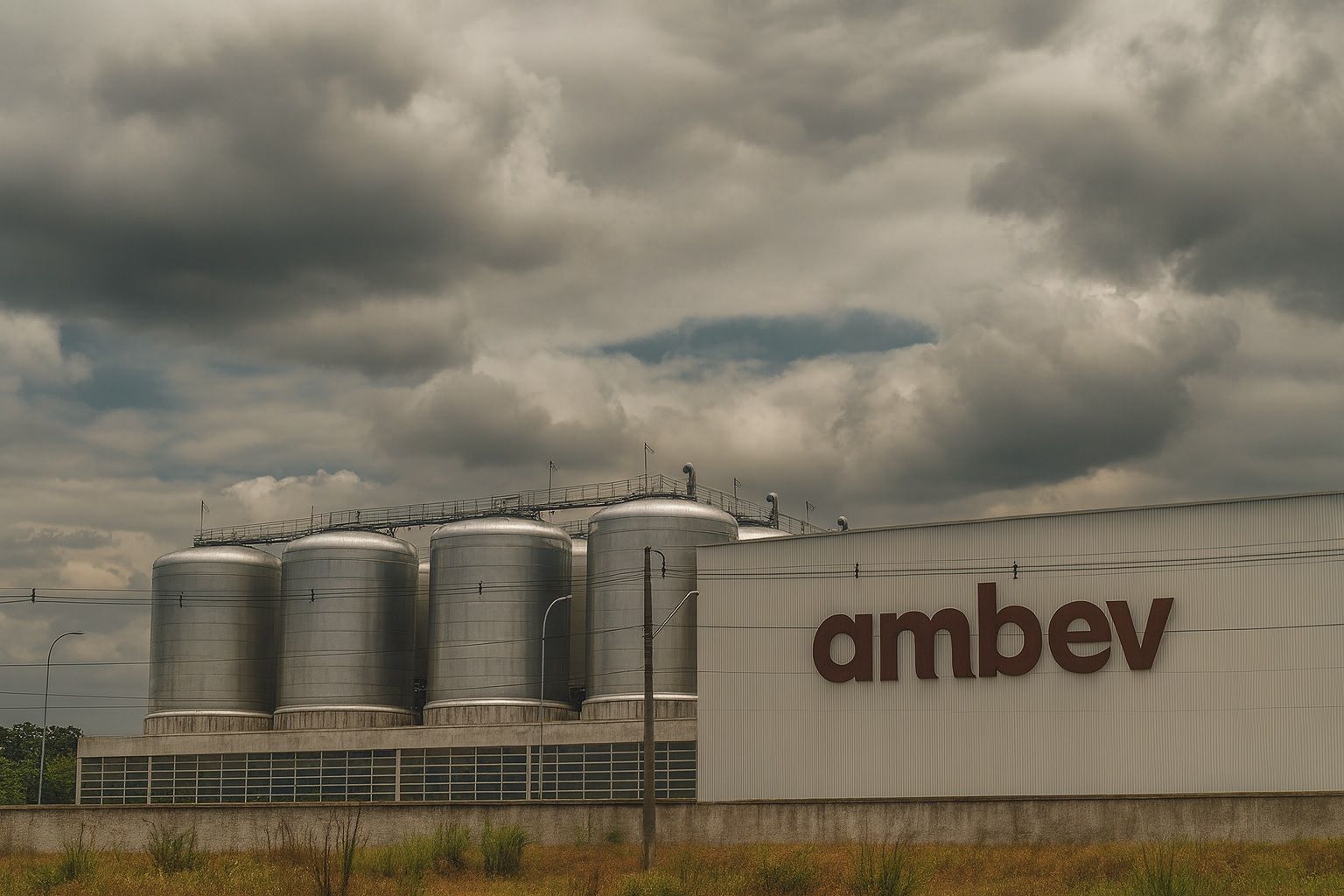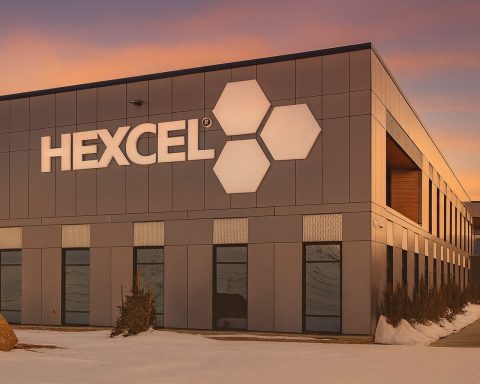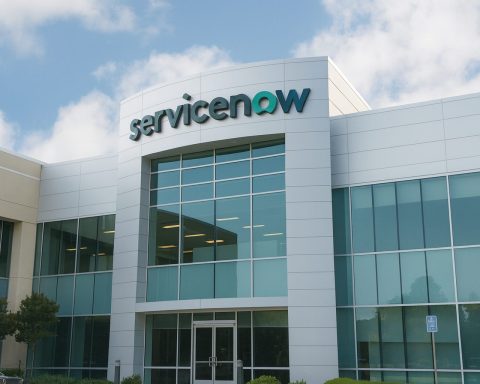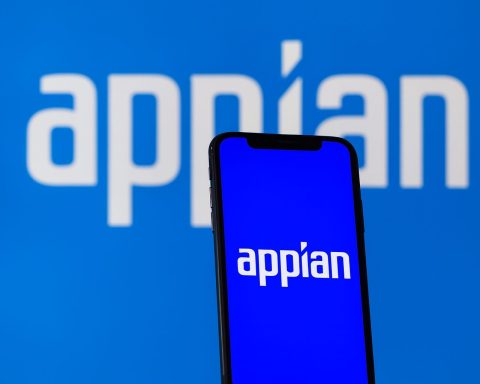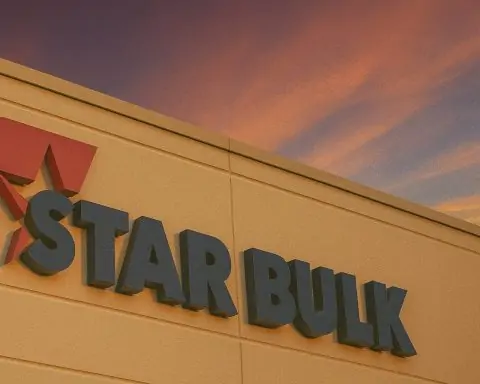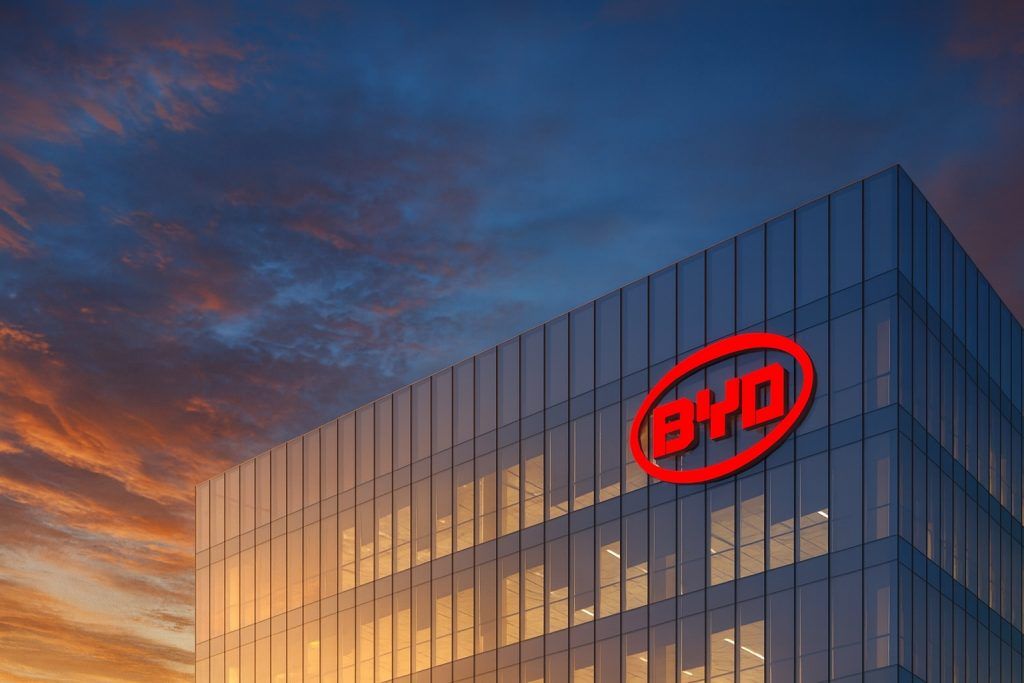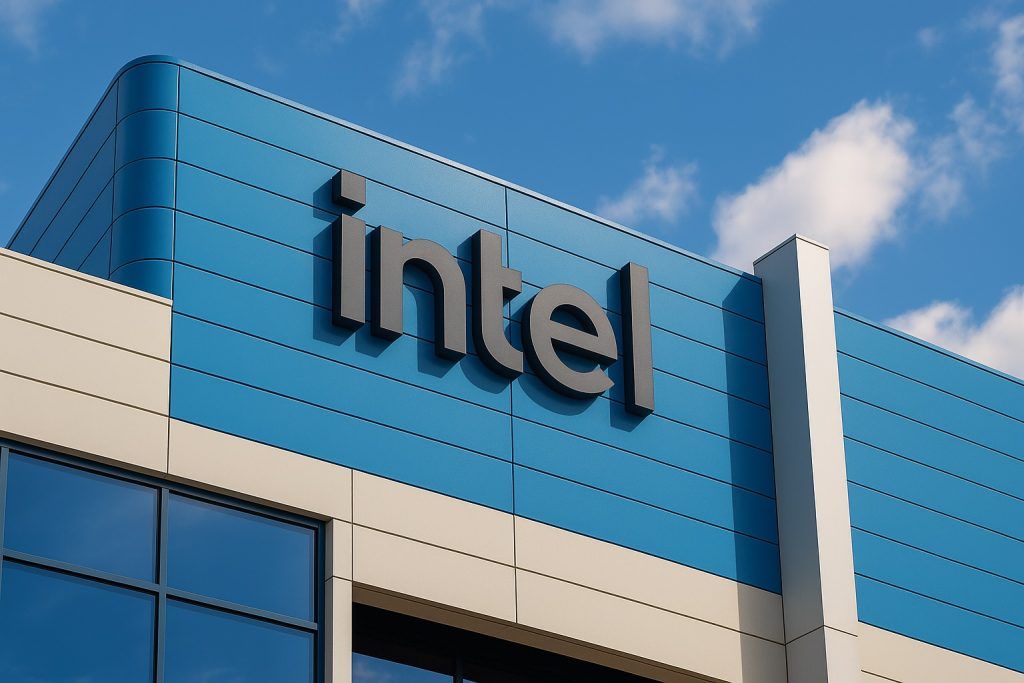- Earnings Beat: Ambev S.A. (NYSE: ABEV) reported third-quarter net income of 4.86 billion reais (~$900 million), a 36% jump year-on-year – far above analyst expectations of ~3.19 billion reais [1]. Adjusted earnings were about $0.06 per share (vs. ~$0.04 expected), with “disciplined” cost controls helping boost margins [2].
- Share Buyback: The brewing giant’s board approved a new stock repurchase program up to 208 million shares (approximately R$2.5 billion in value) over the next 18 months [3]. The buyback (roughly 1.3% of shares) signals management’s confidence even as beer sales face headwinds.
- Sales & Volumes: Revenue was roughly flat as higher prices per hectoliter offset a 5.9% decline in overall beer volumes [4]. Ambev cited “unseasonable weather” and a tough macroeconomic climate in key markets like Brazil and Canada for the volume drop [5]. EBITDA came in at R$7.06 billion (essentially flat, –0.1% YoY) but beat forecasts of ~R$6.65B [6]. Profit margins improved slightly despite softer sales.
- Stock Price Reaction: ABEV stock traded around $2.25 per share on Oct. 30 after the results, up modestly from ~$2.20 last week. The stock is roughly +6–8% year-to-date [7] and remains well below its 52-week high of $2.63 [8]. JPMorgan analysts highlighted Ambev’s margin gains and premium brands, predicting a “positive share reaction” to the strong quarter [9].
- Analyst Outlook: Wall Street remains cautious. Consensus rating is neutral (“hold”), with a 12-month price target around $2.35 [10] – only slightly above current levels. Bulls like Evercore ISI cite “margin momentum and digital growth” and have targets as high as $4 [11], but others warn that “persistent inflationary drag” could limit consumer demand (UBS recently cut its target to $2.20) [12]. As one note put it, Ambev’s “ability to pass on costs will be critical” – aggressive price hikes risk dampening volume [13].
- Dividends & Yield: Ambev pays regular dividends. It raised its quarterly payout to about 2.3–2.4 cents per share (ADR) in October [14] [15], up from ~2.0¢ prior. At the current stock price, that implies a solid annualized yield in the low-to-mid single digits. The latest dividend was paid on Oct. 14 [16], and another is slated for January. Combined with the new buyback, Ambev is returning cash to shareholders even amid challenging conditions.
- Brewing Sector Headwinds: Ambev – Latin America’s largest brewer with ~60% of Brazil’s beer market [17] – is navigating an industry slowdown. It warned of “industry weakness” as demand softens [18]. Rival Heineken recently revealed its Brazil beer shipments fell “mid-teens”% in volume [19], underscoring broad headwinds from higher prices and cautious consumers. Globally, brewers have seen a “multi-year slump” in sales volumes [20], pushing companies to tighten costs. Ambev’s parent AB InBev just posted its own profit beat despite a larger-than-expected volume drop, thanks to cost cuts – and announced a hefty $6 billion buyback and dividend increase [21]. Similarly, Carlsberg has slashed expenses as drinkers scale back after price hikes [22]. “Tightening the purse strings is what people want to see,” notes one investment manager of the alcohol industry’s focus on efficiency [23]. On the positive side, consumers are still trading up to premium brands even as they drink slightly less, helping companies like Ambev preserve revenue per unit [24].
Q3 Earnings: Big Profit Beat and New Buyback
São Paulo-based Ambev delivered a stronger-than-expected third quarter, defying the industry’s mixed outlook. Net profit leapt to R$4.86 billion (~$899 million) [25], a 36% increase from a year ago. This result blew past analysts’ consensus of roughly R$3.2 billion [26], reflecting robust operational performance. On a per-share basis, earnings were approximately $0.06 (USD) for the quarter – significantly higher than estimates around $0.04.
Management credited “disciplined” cost and expense management for shoring up profitability [27]. In an environment of rising input costs, Ambev managed to expand its EBITDA margin slightly, demonstrating effective cost controls. Normalized EBITDA (earnings before interest, taxes, depreciation, and amortization) came in at R$7.06 billion, essentially flat (-0.1% YoY) but above the R$6.65B expected [28]. This indicates the company eked out earnings growth despite stagnant top-line results.
Top-line revenue was roughly stable, as price increases and a richer sales mix offset declining volumes. Ambev reported a 5.8–5.9% drop in total beer and beverage volume sold in Q3 [29]. The steepest declines came in Brazil (its core market) and Canada, which the firm attributed to “unseasonable weather and a dynamic macro environment” hitting demand [30]. In other words, cooler weather and economic pressures curbed beer consumption in key regions. Despite selling less beer, Ambev’s net revenue per hectoliter rose significantly (about +7% organically, per the company’s filing) [31], thanks to price hikes and consumers opting for premium brands. This helped overall revenue edge higher on an organic basis [32].
To further boost shareholder value, Ambev announced a new share buyback alongside its earnings. The brewer’s board approved repurchasing up to 208 million common shares, equivalent to roughly R$2.5 billion (~$500 million USD) based on late-October prices [33] [34]. This buyback authorization, effective through April 2027, represents about 1% of total shares outstanding. Repurchasing shares can enhance future earnings per share and signals that management sees the stock as undervalued. Notably, the timing aligns with Ambev’s strong cash generation – operating cash flow for the quarter was R$6.9 billion, providing ample liquidity for buybacks and dividends [35] [36]. (The company last executed a major buyback in 2019; this new program is a vote of confidence in Ambev’s long-term prospects.)
Despite the upbeat profit news, Ambev struck a cautious tone about the market. In its report, the company acknowledged “soft signs” of industry weakness, pointing to the volume declines as evidence that beer consumption is under pressure [37]. CEO Jean Jereissati (as noted in past calls) has emphasized balancing pricing with affordability – a key challenge as high inflation and interest rates in Brazil squeeze consumers’ wallets. For now, raising prices has been a double-edged sword: it lifts revenue per unit, but if taken too far, can dampen demand. Ambev’s Q3 results show it walking that tightrope – higher prices propped up profit this quarter, but management will need to monitor volume trends closely going forward.
ABEV Stock Update: Modest Rise After Earnings, YTD Gains Intact
Ambev’s U.S.-listed shares (ABEV) saw a mild lift on the earnings news. In Thursday’s morning trade following the results, ABEV stock edged up to around $2.25 – a few cents higher than its prior-day close. Analysts at JPMorgan predicted a “positive share reaction” given the earnings beat and improved margins [38], and indeed the immediate response was upbeat if not dramatic. Investors appeared encouraged by the profit surprise and buyback, even as longer-term concerns linger about the beer market.
In recent sessions before the report, ABEV stock had been trading flat-to-slightly up in anticipation [39]. On October 24, the shares closed near $2.20 [40], hovering close to a five-week low (~$2.18) amid broader market choppiness. Even so, Ambev’s stock was up roughly +6–8% year-to-date ahead of earnings [41] – meaning it has outperformed many peers in the beverage sector. For context, the stock’s 52-week range is approximately $1.77 to $2.63 [42], so at ~$2.25 it remains about 15% below its yearly high.
The moderate post-earnings uptick suggests that much of the bad news was already priced in. Ambev’s volume softness didn’t shock investors – if anything, sentiment had turned pessimistic going into Q3, given economic headwinds. The fact that profitability beat estimates despite lower sales likely reassured shareholders. Ambev’s strong cash flows and the newly announced buyback are additional buffers supporting the stock.
It’s also worth noting that Ambev’s U.S. dollar share price can be influenced by currency moves. The Brazilian real has been relatively firm recently, which helps bolster the dollar value of Ambev’s earnings and dividends. As of Oct. 30, $1 = ~5.4 reais [43], so global investors are keeping an eye on exchange rates as well. A stronger real benefits ABEV’s ADR price (all else equal) since the underlying earnings are in reais.
Looking ahead, volatility in ABEV shares could pick up around key events – e.g. Brazil’s economic reports, central bank decisions, or any shifts in consumer spending trends. But for now, the stock’s modest climb on Q3 results reflects a sigh of relief that Ambev can still deliver growth in a tough climate.
Analyst Views: Cautious Tone Despite Earnings Beat
Financial analysts have a mixed outlook on Ambev, balancing its resilient profitability against macro challenges. The consensus rating on ABEV is effectively “hold” – most brokerages are neutral, and there are few if any outright “buy” recommendations at the moment [44]. According to MarketBeat data, 9 analysts cover Ambev with a collective stance that amounts to “Reduce/Hold” (in fact, 1 firm rates ABEV a Sell and 8 rate it Hold) [45]. The average 12-month price target is approximately $2.30–$2.35 per share [46]. That implies only a slight upside from current levels, underscoring muted expectations on the stock.
Several analysts have trimmed their targets or forecasts in recent months amid higher inflation and weaker beer consumption in Brazil. For instance, UBS in August cut its price target to $2.20 (and maintains a neutral rating), warning of “persistent inflationary drag” on Ambev’s business [47]. HSBC and Zacks similarly rate the stock as a hold [48]. The overarching view: near-term growth will be challenging, so significant share price appreciation is unlikely unless conditions improve.
That said, there are a few bullish voices. Evercore ISI – known for covering the global beer industry – remains upbeat on Ambev, citing “margin momentum and digital growth” initiatives driving the company [49]. Evercore has a $4.00 price target on ABEV [50], which is dramatically above the consensus and indicates confidence that Ambev can leverage its strengths (cost efficiency, market dominance, and technology like its BEES digital platform) to reignite growth. Similarly, J.P. Morgan’s analysts, while noting the negatives of volume decline and cost pressures, emphasized the bright spots in Q3 – namely expanding margins and outperformance by premium brands – and said they “expect a positive share reaction” to the results [51]. This suggests J.P. Morgan sees the glass half-full, at least in the short term.
Importantly, analysts are closely watching pricing strategy and consumer response. As one research note put it, Ambev’s “ability to pass on costs will be critical” going forward [52]. In other words, can the company keep raising prices to protect margins without alienating its drinkers? There is a fine line: beer is a discretionary purchase for many consumers, and aggressive price hikes could push budget-conscious customers toward cheaper alternatives (or out of the market entirely). So far, Ambev has executed well – Brazilians have continued to buy core and premium beers like Skol, Brahma, and Corona despite higher price tags, but further increases risk testing consumers’ limits.
For the full-year 2025, the current analyst consensus projects Ambev will earn on the order of $0.18 per share [53] (USD). That would be roughly flat compared to 2024, reflecting the challenging environment. It also puts ABEV’s forward price-to-earnings ratio around 13–14×, which is reasonable for a defensive consumer staples stock. The moderate valuation and Ambev’s hefty free cash flow yield (the company converts a high portion of sales to cash [54]) are cited by bulls as reasons the downside is limited. Still, few expect explosive growth in the year ahead – the phrase “cautiously optimistic” perhaps best captures the mood.
In sum, while Q3’s positive surprise is encouraging, most analysts are in “wait-and-see” mode. They want confirmation that beer demand in Brazil and other key markets has stabilized (or that Ambev’s diversification into non-beer beverages can pick up the slack). Until then, price targets indicate only modest upside and coverage is tilted toward neutral recommendations.
Sector & Macro Trends: Beer Makers Cut Costs Amid Slump
Ambev’s challenges aren’t unique – they reflect broader headwinds in the global beverage and brewing sector. Beer consumption growth has been sluggish worldwide, and brewers are responding by focusing on efficiency and premiumization:
- Volume Slump Across Brewers: Industry-wide, beer sales volumes have been under pressure due to weak demand in many markets. Brewers are grappling with what one observer called a “multi-year slump” in volume that has weighed on their share prices [55]. In Ambev’s case, Brazil’s economy has slowed and consumer spending is under strain (inflation-adjusted incomes are pinched, and borrowing costs remain high). Competitor Heineken NV sounded an alarm in late October, reporting that its beer volumes in Brazil fell roughly “mid-teens” (%) year-on-year [56] [57] – a much sharper drop than Ambev’s ~6% decline, but indicative of the overall demand downturn. Heineken’s CEO Dolf van den Brink noted that many consumers are buying less beer amid economic uncertainty, especially in emerging markets. This paints a cautious backdrop for all brewers in the region.
- Cost Cutting and Margins: With top-line growth hard to come by, major beverage companies are aggressively cutting costs to protect profits. Ambev’s parent, Anheuser-Busch InBev, for example, reported its own Q3 earnings on Oct. 30 and managed to beat profit forecasts despite a larger-than-expected volume decline – accomplished by slashing expenses and improving efficiency [58]. AB InBev went so far as to announce a $6 billion share buyback and higher dividend, a signal that the world’s biggest brewer is prioritizing shareholder returns while it rides out the slump [59]. Similarly, Denmark’s Carlsberg (the #3 global brewer) said it has tightened budgets on travel, entertainment, and even staffing as it copes with consumers “pulling back spending on beer” after a series of price increases [60]. These moves echo Ambev’s own cost discipline strategy. “When sales are under pressure…turning over every stone to optimize profits” becomes essential, explains Moritz Kronenberger of Union Investment, noting that breweries have high fixed costs and must adjust quickly in lean times [61].
- Premiumization Trends: Even as overall volumes fall, a notable consumer trend is “drinking less but drinking better.” Many beer drinkers are opting for higher-quality or premium brands, though perhaps purchasing fewer units. Carlsberg’s CEO observed that “people are still willing to pay more for quality – they may drink a little less, but are willing to pay more per beer” [62]. This trend benefits companies with strong premium portfolios. For Ambev, premium brands (like Corona, Stella Artois, Budweiser, and craft offerings) have been a growth focus. Indeed, Ambev noted that its premium segment outperformed in Q3 [63], helping mitigate declines in the value segment. The company has also expanded beyond beer – for instance, selling more non-alcoholic drinks and hard seltzers – to diversify revenue. These efforts align with what other alcohol firms (spirits makers, etc.) are doing: emphasizing upscale products and new categories to offset volume drops in traditional lines.
- Macro Environment: High inflation and interest rates form the backdrop to the beverage industry’s woes. In Brazil, inflation has been above target for much of the year, though it is gradually easing. The Brazilian central bank’s key interest rate remains very elevated (recently around 15% Selic) to combat price growth [64]. While inflation is cooling toward the 3% goal, the tight monetary policy has made credit expensive and dampened consumer confidence. This double whammy – prices up, borrowing costs up – is squeezing the average Brazilian’s disposable income, so it’s no surprise that beer purchases have been curtailed. Globally, other markets present their own challenges: China’s economic slowdown, a trend toward health consciousness and lower alcohol intake in developed countries, and competition from wine and spirits for “share of throat” are all factors limiting beer sector growth [65] [66]. The takeaway is that brewers face a tough road in the near term, and only those who adapt (through cost control, innovation, and strategic pricing) will thrive.
Within this context, Ambev’s solid profitability and market dominance give it a relative advantage. The company controls an estimated 60% of Brazil’s beer market by volume [67], thanks to a portfolio of popular brands and an extensive distribution network. This scale allows Ambev to be an efficient producer, which is crucial for weathering downturns. The firm can also leverage AB InBev’s global procurement and best practices to manage input costs (like barley, aluminum for cans, etc.) effectively. However, dominance in a market doesn’t make one immune to economic cycles. Ambev’s leadership has acknowledged that volume recovery may take time – they are focusing on what they can control (costs, premiumization, digital sales channels) while waiting for the macro tide to turn.
Dividends and Outlook: Steady Payouts, Slow but Stable Growth
Despite the headwinds, Ambev continues to reward its shareholders through dividends and now share buybacks. After a pandemic-era pause and a special payout in 2024, the company has resumed regular quarterly dividends [68]. The latest distribution to shareholders was $0.024 per ADR (approximately), paid on October 14, 2025 [69]. This was a slight increase from the prior $0.02-level payouts and reflects management’s confidence in cash flows. At the current share price (~$2.20–$2.30), these quarterly dividends sum up to an annualized yield in the ~4% range, making ABEV an attractive income stock in the beverage sector. The next dividend is scheduled for January 2026 [70], and analysts expect steady payouts to continue given Ambev’s strong balance sheet and commitment to moderate leverage.
Additionally, the new R$2.5 billion share buyback program [71] provides another avenue of return for investors. If executed fully, the buyback could incrementally boost earnings-per-share and signals that the company sees value in its own stock. “Shareholder returns” have clearly become a priority, as evidenced by both the dividend uptick and the buyback announcement coming on the heels of resilient earnings. These moves convey a message: Ambev’s management is optimistic about long-term fundamentals, even if the near-term environment is challenging.
Looking forward, Ambev’s trajectory will depend on a few key factors. First is the pace of economic recovery (or slowdown) in Brazil and its other Latin American markets. Any improvement in consumer confidence or a decline in inflation could revive beer demand – something that would directly benefit Ambev’s volumes. Conversely, if high inflation persists or the economy stagnates, Ambev may face further volume pressure in 2026. The second factor is Ambev’s execution on strategy: expanding its premium brands, growing its non-beer portfolio (such as soft drinks, energy drinks, and bottled water where it partners with or distributes for companies like PepsiCo), and scaling up its digital direct-to-consumer platforms (like the Zé Delivery app and BEES marketplace for retailers). These initiatives are aimed at capturing more value per customer and staying ahead of shifting consumer preferences.
In terms of forecasted performance, as mentioned, the street consensus sees relatively flat earnings next year (around $0.18 EPS for 2025 [72]). Revenue growth is expected to be in the low single digits, assuming Ambev can push through modest price increases and see some stabilization in volume. Profit margins are anticipated to hold in the low-30s percentage (EBITDA margin), given ongoing cost efficiency programs. No dramatic upswing or collapse is projected – essentially, analysts envision a year of stable, if unspectacular, financial results, barring any major economic shifts.
One wildcard is currency: a stronger Brazilian real would inflate the dollar-translated results (a plus for ADR investors), whereas a weakening real would trim the dollar value of Ambev’s earnings and dividends. So far in 2025, the real has been relatively stable and even firmed up, but currency trends will remain on the radar.
In summary, Ambev S.A. enters the final stretch of 2025 with solid profitability and a proactive approach to shareholder value, but in the context of a cautious industry outlook. The company’s Q3 performance shows it can thrive even when beer sales are lukewarm – thanks to savvy pricing and cost cuts – but also highlights the limits of that strategy if volumes keep sliding. For investors, ABEV offers a combination of reliable dividends, exposure to a dominant emerging-market consumer franchise, and now the potential catalyst of a stock buyback. Yet, patience may be required: the stock’s upside appears capped unless beer demand recovers or Ambev uncovers new growth avenues. As one industry expert put it, “It’s tough out there” [73] – but the fact that Ambev and other brewers are beating expectations in a tough environment is itself a hopeful sign. The next few quarters will be telling: they will show whether Ambev can build on this earnings momentum or if further macroeconomic sobriety will temper its prospects. For now, the company has given investors plenty to chew on – a strong quarter, a tangible buyback plan, and a steady flow of dividends – as they weigh the road ahead for this beverage behemoth.
Sources: Ambev Q3 2025 earnings filing and Reuters coverage [74] [75]; ts² TechStock financial news analysis [76] [77]; Reuters reports on global brewing industry trends [78] [79]; company statements and market data as of Oct. 30, 2025.
References
1. www.reuters.com, 2. www.reuters.com, 3. www.reuters.com, 4. www.reuters.com, 5. www.reuters.com, 6. www.reuters.com, 7. ts2.tech, 8. ts2.tech, 9. www.reuters.com, 10. ts2.tech, 11. ts2.tech, 12. ts2.tech, 13. ts2.tech, 14. ts2.tech, 15. ts2.tech, 16. ts2.tech, 17. ts2.tech, 18. www.reuters.com, 19. ts2.tech, 20. www.streetinsider.com, 21. www.streetinsider.com, 22. www.streetinsider.com, 23. www.streetinsider.com, 24. www.streetinsider.com, 25. www.reuters.com, 26. www.reuters.com, 27. www.reuters.com, 28. www.reuters.com, 29. www.reuters.com, 30. www.reuters.com, 31. www.stocktitan.net, 32. www.stocktitan.net, 33. www.stocktitan.net, 34. www.stocktitan.net, 35. www.stocktitan.net, 36. www.stocktitan.net, 37. www.reuters.com, 38. www.reuters.com, 39. ts2.tech, 40. ts2.tech, 41. ts2.tech, 42. ts2.tech, 43. www.reuters.com, 44. ts2.tech, 45. ts2.tech, 46. ts2.tech, 47. ts2.tech, 48. ts2.tech, 49. ts2.tech, 50. ts2.tech, 51. www.reuters.com, 52. ts2.tech, 53. ts2.tech, 54. ts2.tech, 55. www.streetinsider.com, 56. ts2.tech, 57. ts2.tech, 58. www.streetinsider.com, 59. www.streetinsider.com, 60. www.streetinsider.com, 61. www.streetinsider.com, 62. www.streetinsider.com, 63. www.reuters.com, 64. ts2.tech, 65. ts2.tech, 66. ts2.tech, 67. ts2.tech, 68. ts2.tech, 69. ts2.tech, 70. ts2.tech, 71. www.reuters.com, 72. ts2.tech, 73. www.streetinsider.com, 74. www.reuters.com, 75. www.reuters.com, 76. ts2.tech, 77. ts2.tech, 78. www.streetinsider.com, 79. www.streetinsider.com
